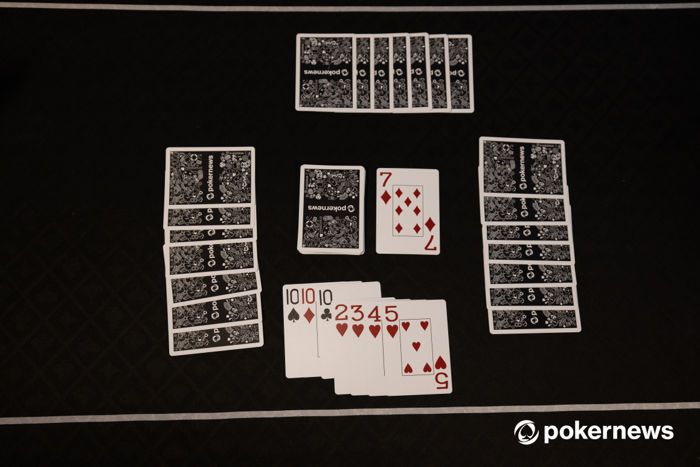Offensive vs Defensive Strategy in Rummy - Which is Best?

In the game of Rummy, the balance between offensive and defensive strategies shapes the course of gameplay. This has an impact on opponents and overall game dynamics. Navigating between offense and defense is crucial for players who want to optimize their strategic choices and enhance their Rummy skills. This section dives into the details of Rummy's offensive vs defensive strategies.
Basic Tactics for Rummy Offensive vs Defensive Play
Offensive play often focuses on speedy melding and discarding high-value cards to minimize your deadwood. Defensive strategies, on the other hand, emphasize holding onto key cards, and trying to minimize points when opponents declare. Recognizing optimal moments to switch between these approaches is important, requiring careful observation of opponents' moves and the rest of the game.
One basic tactic for offensive play is the prompt melding of cards, forming valid sets and sequences. This puts pressure on opponents by reducing deadwood and it increases the chances of going Gin. Defensive tactics involve cautious discarding and retaining potentially useful cards while minimizing the risk of providing opponents with good discards.

Striking the right balance between offense and defense requires flexibility. If an opponent displays aggressive play, a defensive stance may be prudent to counter their moves. Conversely, if the game is unfolding conservatively, a shift towards offensive tactics might exploit opportunities for quicker wins.
Tips for Mastering Offensive Rummy Strategies
Mastering offensive strategies in Rummy requires a combination of tactics aimed at maximizing points and disrupting opponents' plans. One key aspect is the prompt identification of opportunities to meld cards efficiently. Look for sequences and sets that can be quickly formed to reduce deadwood and increase the likelihood of a successful knock or Gin. Aggressively melding cards, especially high-value ones, puts pressure on opponents and limits their options.

Another element of offensive play is recognizing the right moments to disrupt opponents' plans. This involves paying close attention to the cards they pick and discard. If an opponent seems close to completing a set or sequence, consider discarding cards that could interfere with their progress. Disrupting opponents' combinations can impact their scoring potential.
While it's essential to be assertive in melding and pursuing quick wins, players must also assess the potential risks. Evaluate the likelihood of opponents holding key cards needed for their combinations. Taking calculated risks involves melding aggressively when the odds are favorable and holding back when the risk outweighs the potential benefits.
Successful offensive strategies in Rummy hinge on a player's ability to read the game, adapt to opponents' moves, and strike a balance between assertiveness and strategic caution. By mastering the art of offensive play, players can increase their chances of achieving quicker victories and maintaining control over the game dynamics.
Advanced Techniques for Defensive Rummy Strategies
Understanding opponents' playing styles, observing their discards, and anticipating their moves allow players to defend against potential threats.
Minimizing risk is a key element of advanced defensive strategies. This involves careful card management, especially in terms of discards. Players should be mindful of the cards they discard, avoiding those that could benefit opponents or lead to potential combinations. Additionally, keeping track of opponents' discards and adjusting one's own strategy accordingly is instrumental in minimizing the risk of inadvertently helping adversaries.
Maximizing defensive plays also requires strategic card management and meld planning. Holding onto cards that disrupt opponents' potential combinations or contribute to defensive melds is crucial. This strategic retention of cards can not only impede opponents but also enhance the defensive player's hand. For example, holding onto cards that block opponents from completing runs or sets adds a layer of defense to the overall strategy.
Successful defensive strategies involve a delicate balance between reacting to opponents' moves and strategically planning one's own melds and discards. By mastering advanced defensive techniques, players can effectively thwart opponents' plans, minimize risks, and gain control over the flow of the game. This combination of adaptability, risk management, and strategic planning defines a strong defensive approach in the game of Rummy.
Check out our other Card Games
FAQs - Rummy Offensive vs Defensive Strategy
Is it more beneficial to adopt an offensive or defensive strategy throughout an entire Rummy game?
The decision to pursue an offensive or defensive strategy is based on various factors, including individual playing style, the current game situation, and the dynamics of the opponents. Some players may find success in an offensive approach, seeking to maximize points and end the game swiftly. Others might opt for a defensive strategy, aiming to minimize points and disrupt opponents' plans. The optimal choice often involves adaptability and adjusting strategies based on the circumstances.
Can players successfully switch between offensive and defensive strategies multiple times in a single Rummy game?
Skilled players exhibit the ability to transition between offensive and defensive strategies within a single Rummy game. This flexibility is crucial for responding to changing situations, adapting to opponents' moves, and leveraging opportunities. Successful strategy switching reflects a player's adaptability and strategic prowess, contributing to overall mastery of the game.
How does the number of players in a Rummy game impact the effectiveness of offensive and defensive strategies?
The number of player influences the effectiveness of offensive and defensive strategies. In games with more players, the dynamics become more complicated and unpredictable. Offensive plays may encounter increased challenges, necessitating a more thoughtful and cautious approach. Defensive strategies may involve adapting to the diverse playing styles of multiple opponents. The player count contributes to the complexity of decision-making and strategic execution.
Are there specific card combinations that work best with offensive or defensive strategies in Rummy?
While there are no fixed card combinations exclusively tied to offensive or defensive strategies, players often develop preferences based on their unique styles. Defensive strategies may involve holding disruptive cards, while offensive approaches may focus on cards contributing to potential runs or sets. The choice of card combinations is situational and depends on the player's overarching strategy and objectives in a particular hand.
